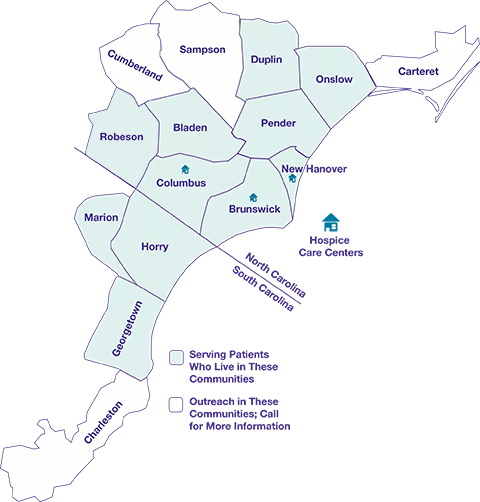
The goal of advance health care is to prepare for future health, treatment and end-of-life issues. You can discuss your wishes with your family and create legal documents, called advance directives. All people can benefit from such important planning.
What is a Health Care Directive?
It is a legal document in which you can decide who you want to make your medical decision and what kind of treatment you don't want. You should have this document prepared when in good physical health and knowing what you want. It's also a good idea to have it for when you become seriously ill or injured.
What are some examples of advanced directives in health care?
An advanced health care directive can be a living will, a durable power of attorney for health care, an individual healthcare instruction or a physician order for life-sustaining treatment. All of these documents are important, but people often use them all together to ensure that they get the treatment they want when they are unable.

How do you create an advance Directive?
Having meaningful conversations about your health with your family is a great way to get started. These conversations can help you think about your values and your wishes, and what is most important to you in the final stages of your life.
You can discuss your wishes with your physician and ask him for them to be recorded in your medical record. You can also write them down and give your family or other loved ones a copy of your advance directive to sign.
Can I use a lawyer to create my advance directive?
It is not required by law that you consult an attorney to draft your advance directive. Some people find it beneficial to work with an attorney in order to complete their advance directives. You may also want to consult with a legal expert for a recommendation on the best type of advance health care directive for you.
Can you change your advance directive?
You are allowed to change your advance directives at any time. Some states do require you to change them in person, or with a notary. You must also add the new advance directive to your medical records in a hospital or nursing home. You should update your advance directives whenever there are significant changes in your condition or if you get a new job, change insurance coverage, move or lose a family member.

What are some of the differences between an advanced directive for health care and a living trust?
A living will is a document that tells a doctor how you want to be treated in the event that you are diagnosed with a terminal illness. It lets your doctors call the person you want if they can't express your wishes.
A durable medical power (POA), also known as a POA, is a legal document which tells doctors and health care providers whom you want to be in charge of your medical care. It's especially important if your illness is serious and you can no longer express yourself.
FAQ
How can I make sure my family has access to quality health care?
Most likely, your state has a department or health that ensures everyone has affordable healthcare. Some states also offer coverage for families with low income children. For more information on these programs, contact the Department of Health of your state.
What are the main types of health insurance?
There are three types of insurance that cover health:
-
Private health insurance covers most of the costs associated with your medical treatment. Private companies often offer this type of insurance. You only pay monthly premiums.
-
Public health insurance covers most of the cost of medical care, but there are limits and restrictions on coverage. Public insurance does not cover preventive services, routine visits to doctors, hospitals and labs, Xray equipment, dental offices, prescription drugs or certain tests.
-
To save money for future medical expenses, medical savings accounts (MSAs) can be used. The funds are kept in a separate account. Most employers offer MSA programs. These accounts are tax-free, and they accumulate interest at rates similar to bank savings accounts.
What does the "health care” term mean?
A service that helps maintain good mental, physical health is known as health care.
What is an infectious disease?
A germ, virus, or parasite can cause an infectious disease. Infectious disease spreads quickly when people come in close proximity. You can get measles or mumps, rubella (German whooping cough), pertussis/whooping chives, rubella ("German measles"), measles), pertussis ("whooping cough"), rubella ("German measles"), chickenpox), strep thyme), hepatitis A/B, HIV/AIDS), herpes simplex viruses, syphilis, gonorrhea and chlamydia
What is the role of private sector?
The private sector has a vital role to play in delivering healthcare. It supplies equipment, among other things, that is used by hospitals.
It pays some staff who work in hospitals. So it makes sense for them to take part in running the system.
However, there are limitations to what they can offer.
Private providers cannot always compete with free services provided by governments.
And they shouldn’t try to run it all. This could be a sign that the system is not providing value for money.
Statistics
- About 14 percent of Americans have chronic kidney disease. (rasmussen.edu)
- Price Increases, Aging Push Sector To 20 Percent Of Economy". (en.wikipedia.org)
- The health share of the Gross domestic product (GDP) is expected to continue its upward trend, reaching 19.9 percent of GDP by 2025. (en.wikipedia.org)
- The healthcare sector is one of the largest and most complex in the U.S. economy, accounting for 18% of gross domestic product (GDP) in 2020.1 (investopedia.com)
- Foreign investment in hospitals—up to 70% ownership- has been encouraged as an incentive for privatization. (en.wikipedia.org)
External Links
How To
What are the Four Health Systems?
The healthcare system includes hospitals, clinics. Insurance providers. Government agencies. Public health officials.
The goal of this infographic was to provide information to people interested in understanding the US health care system.
These are some of the most important points.
-
Healthcare spending is $2 trillion annually, representing 17% of the GDP. It's nearly twice the size as the entire defense budget.
-
In 2015, medical inflation reached 6.6%, which is higher than any other consumer category.
-
Americans spend 9% on average for their health expenses.
-
In 2014, over 300 million Americans were uninsured.
-
The Affordable Care Act (ACA) has been signed into law, but it isn't been fully implemented yet. There are still many gaps in coverage.
-
A majority of Americans believe that there should be continued improvement to the ACA.
-
The US spends more money on healthcare than any other country in the world.
-
Affordable healthcare would lower the overall cost by $2.8 Trillion annually if everyone had it.
-
Medicare, Medicaid and private insurers pay 56% of healthcare expenses.
-
There are three main reasons people don't get insurance: not being able or able to pay it ($25 billion), not having the time ($16.4 billion) and not knowing about it ($14.7 trillion).
-
There are two types: HMO (health maintenance organisation) and PPO [preferred provider organization].
-
Private insurance covers the majority of services including doctors, dentists and prescriptions.
-
Public programs provide hospitalization, inpatient surgery, nursing home care, long-term health care, and preventive services.
-
Medicare is a federal program that provides senior citizens with health coverage. It pays for hospital stays, skilled nursing facility stays, and home health visits.
-
Medicaid is a joint federal-state program that provides financial assistance for low-income individuals or families who earn too little to qualify for other benefits.